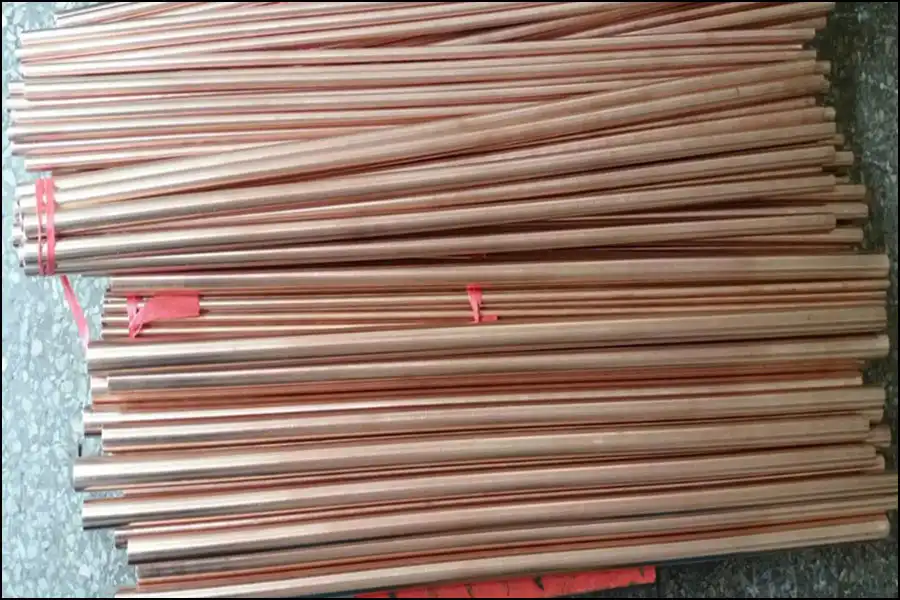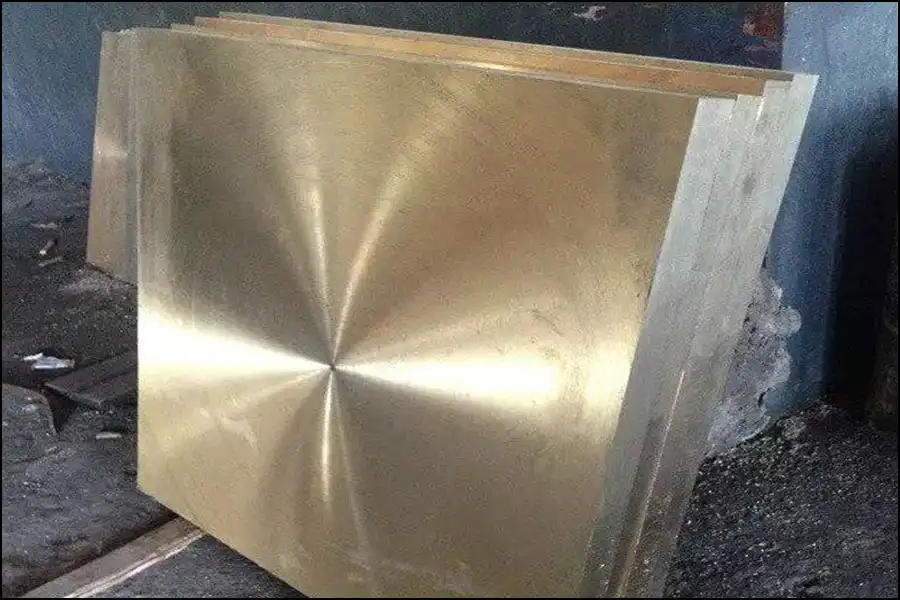CuCo1Ni1Be-CW103C
CuCo1Ni1Be—CW103C (DIN 2.1285) Cobalt Nickel Beryllium Copper Alloy contains approximately 1% Cobalt, 1% Nickel and 0.5% Beryllium. After hot forging and heat treatment processes this material gains considerably hardness, electrical and thermal conductivity as well. It is possible to have different combinations of electrical conductivity and hardness by changing the heat treatment conditions;CuCo1Ni1Be also Offers good strength and hardness characteristics coupled with conductivity in the range of 45-60 percent of copper with ultimate tensile and hardness properties approaching 140 ksi and RB 100 respectively, all of its properties are quite the same as CuCo2Be-C17500 and CuNi2Be-C17510.
Typical Application for CuCo1Ni1Be - Cobalt Nickel Beryllium Copper Alloys
Typical Physical Properties
cw103c Chemical Composition
Executive standard:ASTM/GB/T5233-2001/EN12163(%max., unless shown as range or min.)
| Numbering | Be | Co+Ni | Cu | Fe | Pb | Si | Al |
|---|---|---|---|---|---|---|---|
| cw103c | 0.40-0.70 | 2.40-2.70 | Balance | 0.15 | - | 0.15 | 0.15 |
Mechanical properties and conductivity analysis
(AT/TF00)
| Status | Tensile Strength /MPa | Yield Strength /MPa | Elongation% | Hardness B/C | Conductivity %IACS | Conductivity %IACS |
|---|---|---|---|---|---|---|
| A(TB00) | 420-550 | 210-390 | 30-60 | B 45-78 | ≤140 | 15-19 |
| ¼H(TD01) | 520-620 | 420-570 | 20-45 | B 68-90 | 120-220 | 15-19 |
| ½H(TD02) | 590-710 | 520-670 | 12-30 | B 88-96 | 140-240 | 15-19 |
| H(TD04) | 700-850 | 630-810 | 2-18 | B 96-102 | ≥170 | 15-19 |
| AT(TF00) | 1160-1380 | 980-1240 | 3-15 | C 36-42 | ≥320 | 22-28 |
| ¼HT(TH01) | 1230-1450 | 1050-1310 | 3-10 | C 36-43 | 320-420 | 22-28 |
| ½HT(TH02) | 1300-1520 | 1120-1380 | 1-8 | C 38-44 | 340-440 | 22-28 |
| HT(TH04) | 1330-1550 | 1160-1450 | 1-6 | C 38-45 | ≥360 | 22-28 |
Available Status
| Brush Name | ASTM Name | Description |
|---|---|---|
| A | TB00 | Solution annealing state (quenched state) |
| ½H | TD01 | Quarter hard |
| ½H | TD02 | Half hard (semi-hard) |
| ¾H | TD03 | Three-quarters hard |
| H | TD04 | Hard state (full hard) |
| AT | TF00 | Standard aging heat treatment in quenched state |
| ¼HT | TH01 | Quarter hard standard aging heat treatment |
| ½HT | TH02 | Half-hard standard aging heat treatment |
| ¾HT | TH03 | Three-quarters hard standard aging heat treatment |
| HT | TH04 | Hard standard aging heat treatment (a process of comprehensive strengthening of deformation and aging) |
Note: In the Brush name:
- "A" represents the state of solution annealing (annealed, the alloy is in the softest state, easy to be stamped and formed, and needs to be cold worked or strengthened during the direct failure period);
- "H" stands for cold processing state (hard);
- "T" means that the material has been aging hardened by standard heat treatment (heat treatment means the state of aging strengthening heat treatment).



